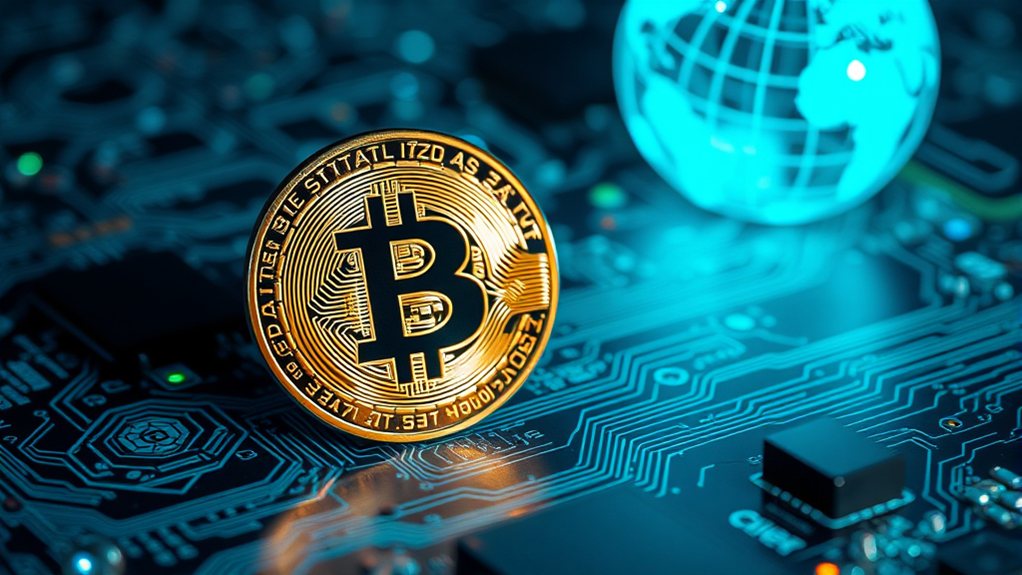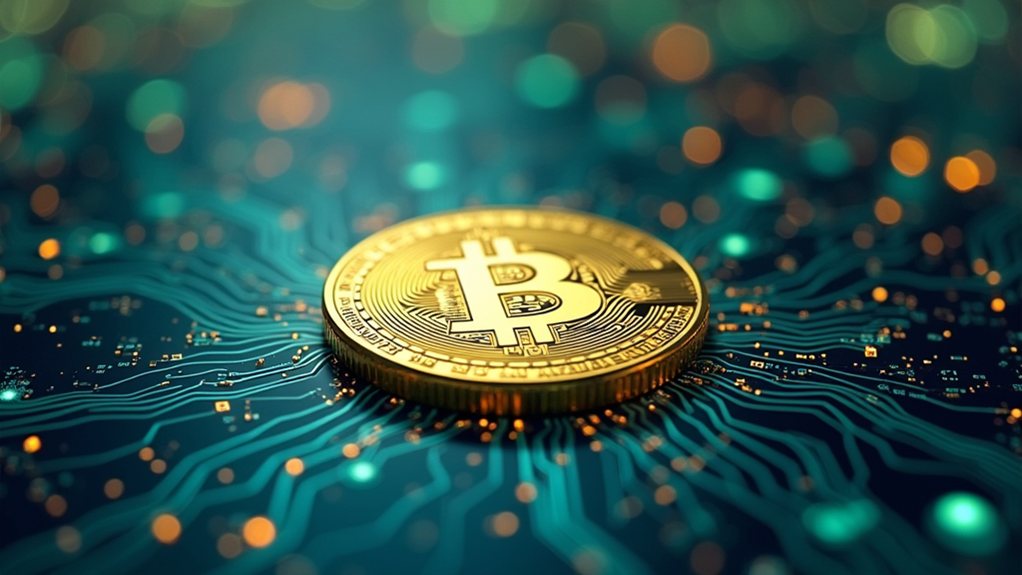Bitcoin isn't backed by physical assets or government guarantees. Instead, it's supported by its blockchain technology, cryptographic security, and limited supply of 21 million coins. The network of users worldwide who trust and use the system gives it value. Bitcoin's worth comes from market demand, its utility as a payment system, and its scarcity. The technology's resistance to censorship and fraud adds to its foundational strength.

Unlike traditional currencies backed by governments, Bitcoin is supported by a complex web of technology and market forces. At its core, Bitcoin runs on a decentralized network called blockchain. This technology stores transactions across thousands of computers worldwide. No bank or government controls it. Instead, a global network of participants verifies each transaction.
Bitcoin uses strong cryptography to stay secure. The SHA-256 algorithm creates an unchangeable record of all transactions. Users have private keys to access their funds and make transactions. These security features make Bitcoin resistant to fraud and hacking. Bitcoin is a base-layer monetary asset whose value is inherently self-reliant rather than dependent on external backing. The network can only be compromised if someone controls over 51% of its computing power, which is extremely difficult.
One of Bitcoin's key features is its limited supply. Only 21 million bitcoins will ever exist. New coins enter circulation through "mining," where computers solve complex math problems. Every four years, the reward for mining is cut in half. This process, called "halving," makes Bitcoin increasingly scarce. The last bitcoin is expected to be mined in the year 2140.
Bitcoin's mathematically guaranteed scarcity sets it apart – only 21 million will ever exist, creating digital rarity by design.
Bitcoin's value also comes from its growing adoption. With a market value of about $1.2 trillion, it's the largest cryptocurrency in the world. Over 100 million people use Bitcoin globally. Some countries, like El Salvador and the Central African Republic, have made it legal tender. More merchants now accept Bitcoin payments, increasing its usefulness. Bitcoin was introduced by Satoshi Nakamoto in 2008 as an alternative to traditional fiat currencies.
The network runs on significant computing power and electricity. Miners use specialized hardware to process transactions and secure the network. The system automatically adjusts difficulty to maintain consistent block times. While Bitcoin mining uses an estimated 10-15 gigawatts of electricity, it also creates incentives for renewable energy development. Bitcoin's protocol enables decentralized monetary policy through programmatic issuance rates and mining difficulty adjustments without central authority intervention.
Bitcoin trades 24 hours a day on exchanges around the world. Daily trading volumes reach $20-30 billion. Regulated exchanges now offer Bitcoin futures and options. This liquidity makes it easier for people to buy and sell Bitcoin when they want.
The regulatory landscape for Bitcoin continues to evolve. In the United States, the IRS treats Bitcoin as property for tax purposes. The Commodity Futures Trading Commission oversees Bitcoin futures markets. Exchanges in many countries must follow anti-money laundering rules. These regulations help legitimize Bitcoin in the financial system.
Bitcoin's value ultimately comes from trust in its technology, its limited supply, and growing market acceptance. Without physical assets behind it, Bitcoin relies on its network security, mathematical scarcity, and utility as a digital store of value. As more people and institutions adopt it, the network effect strengthens Bitcoin's position in the global financial landscape.
Frequently Asked Questions
Is Bitcoin Environmentally Sustainable?
Bitcoin isn't environmentally sustainable based on current evidence.
It consumes 0.5% of global energy, equivalent to Argentina's usage. The network produces 85.89 Mt of CO2 annually, with 62% of mining powered by fossil fuels.
Each transaction uses 1,200 kWh—equal to 100,000 VISA transactions.
While solutions like renewable energy and efficient hardware exist, Bitcoin's growing popularity continues to increase its environmental impact.
How Do I Safely Store My Bitcoin?
Bitcoin owners typically use three main storage options.
Hardware wallets, like Ledger or Trezor, store keys offline and provide high security.
Software wallets offer convenience on phones or computers but may be vulnerable to hacking.
Paper wallets contain printed keys for offline storage but can be damaged.
Security experts recommend using strong passwords, enabling two-factor authentication, and backing up recovery phrases in secure locations.
Can Governments Regulate or Ban Bitcoin?
Governments worldwide are taking different approaches to Bitcoin. Some countries have banned it, while others have created regulations.
The U.S. treats Bitcoin as property for tax purposes. El Salvador has even made it legal tender.
However, Bitcoin's decentralized nature makes complete control difficult. Even with bans on exchanges, peer-to-peer trading continues.
Regulators are increasingly focusing on exchange regulations, KYC requirements, and tax reporting frameworks.
What Happens to Bitcoin When All Coins Are Mined?
When all 21 million bitcoins are mined, expected around 2140, miners won't receive block rewards anymore.
They'll only earn transaction fees. This shift could affect network security if fees aren't sufficient to incentivize miners.
Bitcoin's value might increase due to its fixed supply. The network will likely need to adapt through technological solutions like the Lightning Network.
Mining operations may consolidate as the economics of mining change.
How Does Bitcoin Transaction Speed Compare to Traditional Payment Systems?
Bitcoin processes only 3-7 transactions per second, far slower than traditional systems.
Visa handles up to 24,000 per second, while Mastercard manages about 5,000.
Bitcoin confirmations take around 10 minutes, with full finality requiring an hour.
However, Bitcoin's Lightning Network enables nearly instant transactions.
Traditional wire transfers and ACH payments still take days to complete, despite their higher processing capacity.










